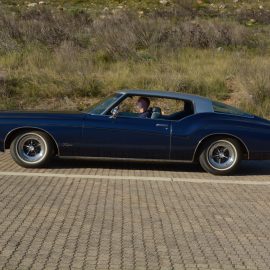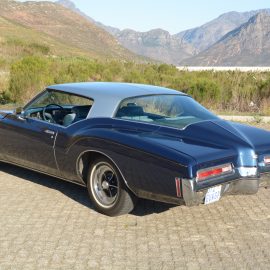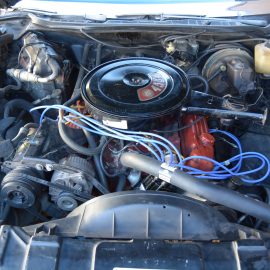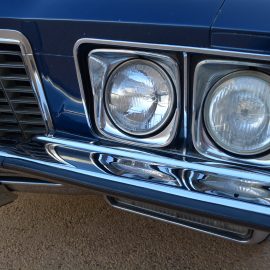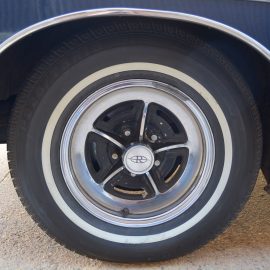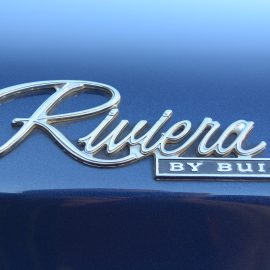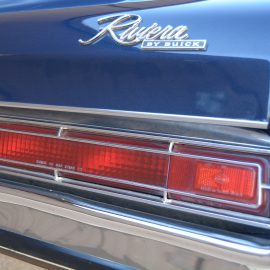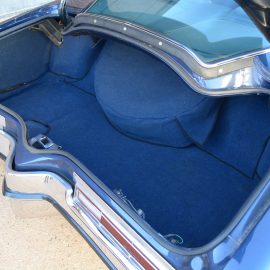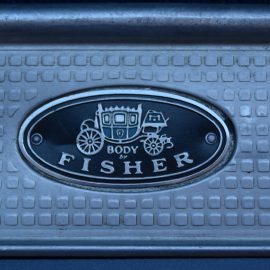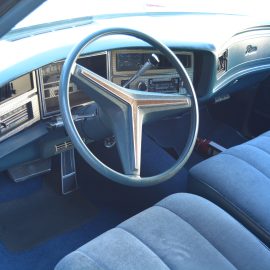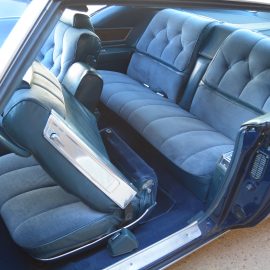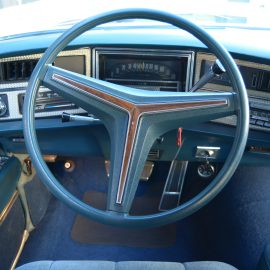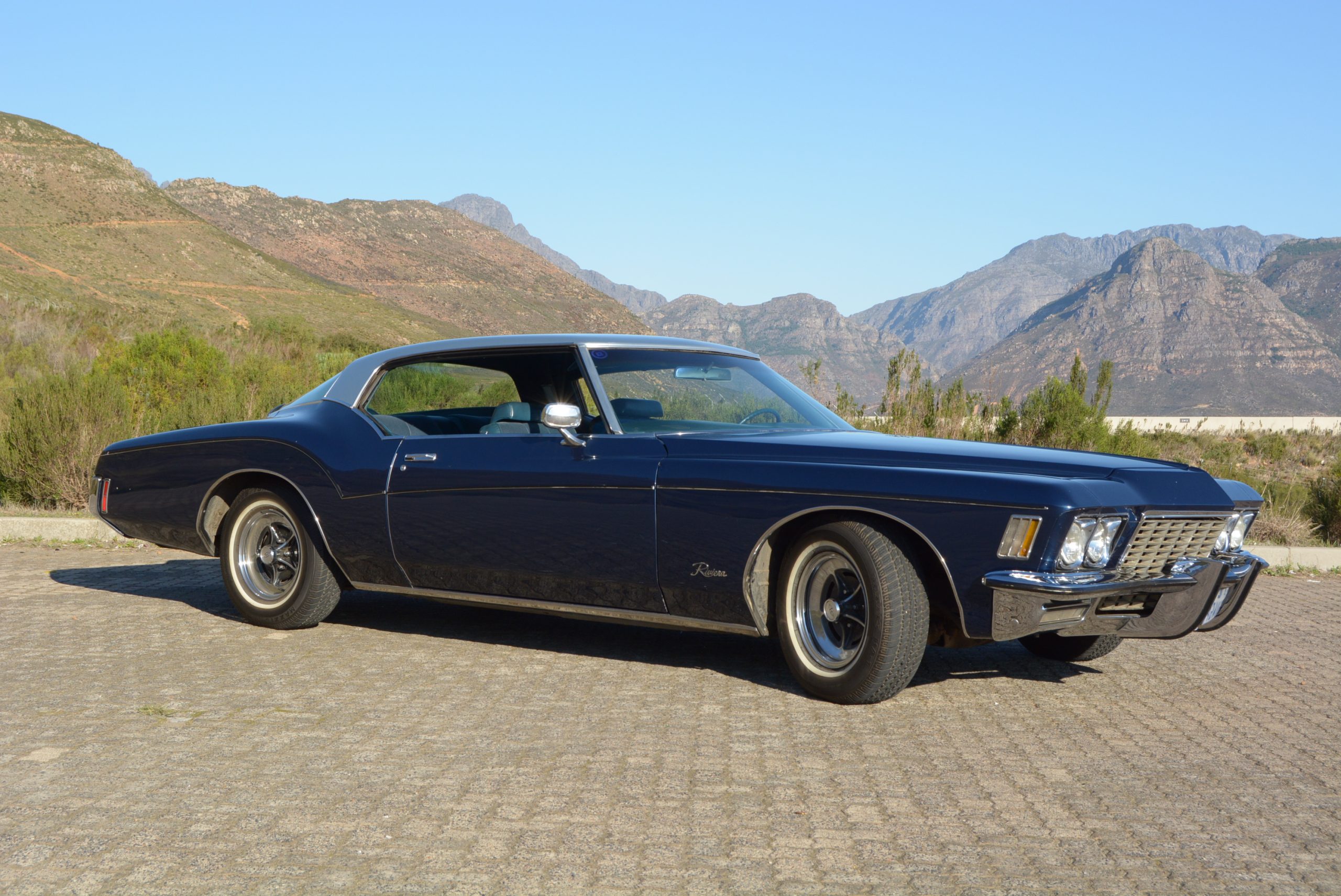
26 Feb Anniversary Celebration: Buick
The second in a new series of features covering vehicles in the FMM collection which are celebrating an anniversary during 2022. This month we look at a 50-year-old Buick with a nautical connection…
It is not as if America is short on sun kissed, surf washed coastlines, but when it comes to images of heavenly bodies, beach parties and sun-downers on the rocks, the stretch of Mediterranean coastline at the southern end of Italy, Monaco and France, known universally as the Riviera, is synonymous with the good life. In 1949 the glamour of the Riviera appealed to conservative automaker Buick, who adopted the name for a “stunningly smart” derivative of its Roadmaster line-up.
The name lasted as a spec level on various models until 1963 when it finally became a model line in its own right. GM needed a ‘personal luxury car’ to challenge the sales success of Ford’s Thunderbird. Under guidance from GM’s legendary chief stylist William L Mitchell, the Cadillac XP-715 was created, but the company’s management was not really interested, so the rest of the GM stable were invited to pitch for the design. Buick was struggling and, with the aid of the McCann-Erickson advertising agency, managed to beat off Pontiac and Oldsmobile to earn the rights to production, and so on 4 October 1962 the virtually unchanged design was launched as the first-generation Buick Riviera.
Unusually for badge-engineering savvy GM, the Riviera boasted a unique bodyshell and it was an instant sales success, giving the T’bird its first serious challenge on the showroom floors. During its three-year production life it sold a respectable 112 244 units. On the 1965 model, the stylised ‘R’ emblem was used for the first time, a trademark that would continue throughout the remainder of Riviera’s 36-year production run.
The second-generation Riviera was in production from 1966 to 1970. Interestingly, this Riviera shared its cruciform frame, powertrain and brakes platform with the Oldsmobile Toronado and, later, the Cadillac Eldorado but, unlike the other two, retained rear-wheel drive. Despite the fact that 1970 sales dropped to 37 366, the second-generation Riviera proved more successful than the first with total sales of 227 669 during its five-year production life.
Although having always been a stylish design, the introduction of the third-generation Riviera (Series 49487) in 1971 certainly rocked the establishment. The boat-tail design was a revelation, an evolution of the split-screen of the 1963 Chevrolet Corvette Sting Ray. Bill Mitchell nominated it as his favourite car of all time. It was described as being as ‘elegant as Jackie Onassis and as hard-hitting as Muhammad Ali’. The looks featured a distinctive bumper-to-bumper thin ridge line running right through the grille, along the bonnet, over the roof and down the pointed tail, its subtle enhancement best appreciated when viewed from above. The Riviera bears little other ornamentation, and the muscular ‘raised hips’ rear fenders and pillarless glasshouse make for a striking profile.
FMM’s example is a 1972 model that differed marginally by having a different, thrusting ‘egg-crate grille’, vinyl side mouldings that accentuate the ‘Coke bottle’ bodyside swage line, but without the Full-Flo ventilation system’s ill-fated full-flow louvres on the boot lid. Innovation does not always work out…
Hydraulic dampers support the gazebo-sized bonnet under which sits GM’s cubic conquering Big Block 455 ci (7 456 cc) V8. Fed by a four-barrel Rochester carburettor and running a modest 8,5:1 compression ratio (in line with the USA’s EPA’s then new emissions legislation), it pumps out 187 kW at a stress-free 4 000 r/min, and a locomotive-like 509 N.m of torque at an equally lazy 2 800. Transmission is GM’s Turbo Hydramatic 400 three-speed with a column shift Together, they propel the 2 040 kg Riviera to a claimed 0-100 km/h time of 9,4 seconds and a theoretical top speed (ie without a speed governor) of 202 km/h. Average combined fuel consumption is given at (gulp) 21,2 litres/100 km. Put your foot down and the popular belief that “there ain’t no substitoot fer cubic inches” springs to mind as the V8 rises to the occasion and emits that characteristic basso profundo rumble from its twin exhausts.
It is a BIG car – 5 545 mm long, 2 032 mm wide, 1 372 mm high with a 3 099 mm wheelbase. Nominally it seats five, although the asymmetrically-split cloth-upholstered front seat – one of three front seat arrangement options – could take a middle passenger without too much of a squeeze. The driver’s portion boasts electric adjustment via a joy-stick located in the door armrest, but even at its furthest setting, legroom is far from generous and the plastic three-spoke steering wheel sits close. With the front seat backrest tipped forward in typically angular style, access to the rear is reasonable and headroom all round is good – but, overall, the length of the cabin is shorter than you would think. The thick C-pillar protects rear-seat passengers’ heads ahead of the dramatic one-piece rear screen, which is tapered and curved to blend with the lines of the boat-tail. Comfort is a given, and with all four panes of side glass electrically retracted, no matter where you sit it is a bit like sitting in a convertible with a peaked cap on. Cool…
Manoeuvrability is hardly a strongpoint but the Riviera is built for cruising, not shopping. The power-assisted steering is light and it takes a little while to get used to gauging the right amount of input required to guide the Riviera through sweeping bends, although the view over the huge flat, square bonnet is unhindered. With independent suspension up front and a self-levelling set-up at the rear, progress is surprisingly steady, devoid of the expected float typical of American cars of the era. Although front and rear tracks are fairly wide – 1 615/1 626 mm, respectively – brisk cornering understandably brings about some body roll, but nothing excessive and not enough to tarnish what is the epitome of a boulevard ride.
Attractive stylised rims are fitted with 225/75R15 whitewall tyres. Period road tests praised the disc/drum braking system, as well as the standard MaxTrac anti-wheelspin control.
Listed at $5 903 – way under the T’bird’s sticker price – sadly, the third-generation Riviera failed to boost the company’s fortunes. Sales for 1971 dropped to 33 810, the lowest to date, and to 33 728 in 1972, which led management to believe that the boat-tail deck lid was too radical for most customers’ tastes, so in 1973 it was blunted and made slightly shorter. The design change however only led to a marginal increase in sales, with 34 080 being produced for the model year.
The fourth-generation Riviera was introduced in 1974. Built on the same platform and mechanicals – even with some carryover body panels – the distinctive boat-tail design gave way to what is described as the ‘Colonnade’ treatment, and the car became a pillared coupé with fixed quarter windows. Four more generations were to follow, none of which captured the imagination of the buying public in the way that the first three had done, and the Riviera name was dropped in 1999.
The first two iterations of the Riviera set a styling trend that captured the imagination of the American public. But when the dramatic boat-tail version appeared they inexplicably shied away, leaving in their wake one of the most stylish, charismatic and distinctive personal luxury cars of its time. It was one that got away…




